History of Saudi Arabia
From Wikipedia, the free encyclopedia
The modern state of Saudi Arabia was founded in 1932 with the union of the kingdoms of the Hejaz and Nejd. Although the territory within the Kingdom of Saudi Arabia's boundaries is largely arid desert or rocky infertile terrain – home for much of its history to tribal nomadic societies with only rudimentary state structures – it has twice in world history had a global impact. The first was in the 7th century when it became the cradle of Islam. The second was from the mid-20th century when the discovery of vast oil deposits propelled it into a key economic and geo-political role. At other times, the region existed in relative obscurity and isolation, although from the 7th century the cities of Mecca and Medina had the highest spiritual significance for the Islamic world, Mecca being the destination for the Hajj annual pilgrimage. Contents |
Early history
Main article: Pre-Islamic Arabia
There is evidence that human habitation in the Arabian peninsula dates back to about 15,000 to 20,000 years ago.[1] However, the harsh climate historically prevented much settlement. In pre-Islamic Arabia, apart from a small number of urban trading settlements, such as Mecca and Medina, located in the Hejaz in the west of the peninsula, most of what was to become Saudi Arabia was populated by nomadic tribal societies or uninhabitable desert. Archaeology, however, revealed some early settled cultures: the Dilmun on the Persian Gulf, and Thamud north of the Hejaz. The earliest known events in Arabian history are migrations from the peninsula into neighbouring areas.[2]The rise of Islam
Main article: Muslim history
The Prophet of Islam, Muhammad, was born in Mecca in about 570 and first began preaching in the city in 610, but migrated to Medina in 622. From there he and his companions united the tribes of Arabia under the banner of Islam and created a single Arab Muslim religious polity in the Arabian peninsula.Following Muhammad's death in 632, Abu Bakr became leader of the Muslims as the first Caliph. After putting down a rebellion by the Arab tribes (known as the Ridda wars, or "Wars of Apostasy"), Abu Bakr attacked the Byzantine Empire. On his death in 634, he was succeeded by Umar as caliph, followed by Uthman ibn al-Affan and Ali ibn Abi Talib. The period of these first four caliphs is known as al-khulafā' ar-rāshidūn (R.A): the Rashidun or "rightly guided" Caliphate. Under the Rashidun Caliphs, and, from 661, their Umayyad successors, the Arabs rapidly expanded the territory under Muslim control outside of Arabia. In a matter of decades Muslim armies decisively defeated the Byzantine army and destroyed the Persian Empire, conquering huge swathes of territory from the Iberian peninsula to India. The political focus of the Muslim world then shifted to the newly conquered territories.[3][4]
Nevertheless, Mecca and Medina remained the spiritually most important places in the Muslim world. The Qu'ran requires every able-bodied Muslim who can afford it, as one of the five pillars of Islam, to make a pilgrimage, or Hajj, to Mecca during the Islamic month of Dhu al-Hijjah at least once in his or her lifetime.[5] The Masjid al-Haram (the Grand Mosque) in Mecca is the location of the Kaaba, Islam's holiest site, and the Masjid al-Nabawi (the Prophet's Mosque) in Medina is the location of Muhammad tomb; as a result, from the 7th century, Mecca and Medina became the pilgrimage destinations for large numbers of Muslims from across the Islamic world.[6]
The Middle Ages
Despite its spiritual importance, in political terms Arabia soon became a peripheral region of the Islamic world, in which the most important medieval Islamic states were based at various times in such far away cities as Damascus, Baghdad, and Cairo. Most of what was to become Saudi Arabia reverted to traditional tribal rule soon after the initial Muslim conquests, and remained a shifting patchwork of tribes and tribal emirates and confederations of varying durability.[7][8]However, from the 10th century (and, in fact, until the 20th century) the Hashemite Sharifs of Mecca maintained a state in the most developed part of the region, the Hejaz. Their domain originally comprised only the holy cities of Mecca and Medina but in the 13th century it was extended to include the rest of the Hejaz. Although, the Sharifs exercised at most times independent authority in the Hejaz, they were usually subject to the suzerainty of one of the major Islamic empires of the time. In the Middle Ages, these included the Abbasids of Baghdad, and the Fatimids, Ayyubids and Mamluks of Egypt.[7]
The Ottoman Era
See also: Ottoman Empire
18th century: the rise of Wahhabism and the first Saudi "state"
First Saudi State (1744–1818)
 The emergence of the Saudi dynasty began in central Arabia in 1744. In that year, Muhammad ibn Saud, the tribal ruler of the town of Ad-Dir'iyyah near Riyadh, joined forces with the religious leader Muhammad ibn Abd-al-Wahhab,[10] the founder of the Wahhabi movement – a radical form of Islam.[11] This alliance formed in the 18th century provided the idealogical impetus to Saudi expansion and remains the basis of Saudi Arabian dynastic rule today. Over the next 150 years, the fortunes of the Saud family rose and fell several times as Saudi rulers contended with Egypt, the Ottoman Empire, and other Arabian families for control of the peninsula.[1][7]
The emergence of the Saudi dynasty began in central Arabia in 1744. In that year, Muhammad ibn Saud, the tribal ruler of the town of Ad-Dir'iyyah near Riyadh, joined forces with the religious leader Muhammad ibn Abd-al-Wahhab,[10] the founder of the Wahhabi movement – a radical form of Islam.[11] This alliance formed in the 18th century provided the idealogical impetus to Saudi expansion and remains the basis of Saudi Arabian dynastic rule today. Over the next 150 years, the fortunes of the Saud family rose and fell several times as Saudi rulers contended with Egypt, the Ottoman Empire, and other Arabian families for control of the peninsula.[1][7]
Second Saudi State (1824–1891) at its greatest extent
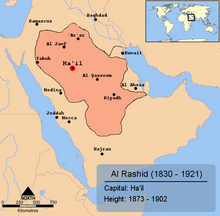
Al-Rashid rule at its greatest extent
19th century: tribal warfare and Ottoman domination
The Al Saud returned to power in 1824 but their area of control was mainly restricted to the Saudi heartland of the Nejd region, known as the second 'Saudi State'. However, their rule in Nejd was soon contested by new rivals, the Al Rashid of Ha'il. Throughout the rest of the 19th century, the Al Saud and the Al Rashid fought for control of the interior of what was to become Saudi Arabia. By 1891, the Al Saud were conclusively defeated by the Al Rashid, who drove the Saudis into exile in Kuwait.[1][7][7][13]Meanwhile, in the Hejaz, following the defeat of the first Saudi State, the Egyptians continued to occupy the area until 1840. After they left, the Sharifs of Mecca reasserted their authority, albeit with the presence of an Ottoman governor and garrison.[7]
The Arab Revolt (1916–1918)
Main article: Arab Revolt
Soldiers in the Arab Army during the Arab Revolt of 1916–1918, carrying the Flag of the Arab Revolt and pictured in the Arabian Desert.
In 1916, with the encouragement and support of Britain and France[15] (which were fighting the Ottomans in the First World War), the Sharif of Mecca, Hussein bin Ali, led a pan-Arab revolt against the Ottoman Empire with the aim of securing Arab independence and creating a single unified Arab state spanning the Arab territories from Aleppo in Syria to Aden in Yemen. The Arab army comprised bedouin and others from across the peninsula, but not the Al Saud and their allied tribes who did not participate in the revolt partly because of a long-standing rivalry with the Sharifs of Mecca and partly because their priority was to defeat the Al Rashid for control of the interior. Nevertheless, the revolt played a part in the Middle-Eastern Front and tied down thousands of Ottoman troops thereby contributing to the Ottomans' First World War defeat in 1918.[7][16]
However, with the subsequent partitioning of the Ottoman Empire, the British and French reneged on promises to Hussein to support a pan-Arab state. Although Hussein was acknowledged as King of the Hejaz, Britain later shifted support to the Al Saud, leaving him diplomatically and militarily isolated. The revolt, therefore, failed in its objective to create a pan-Arab state but Arabia was freed from Ottoman suzerainty and
control.[16] Abdul Aziz and the foundation of Saudi Arabia
Main article: Unification of Saudi Arabia

Arabia about 1923. Expandable map: Abdul Aziz's domain is in blue with dates of conquest. The Kingdom of the Hejaz, conquered in 1925, is in light green. (The other Hashemite kingdoms of Iraq and Transjordan are also in shades of green)
The founder of modern Saudi Arabia, King Abdul Aziz, converses with President Franklin Delano Roosevelt on board a ship returning from the Yalta Conference in 1945.
Prior to 1923, Abdul Aziz had not risked invading the Hejaz because Hussein bin Ali, King of the Hejaz, was supported by Britain. However, in that year, the British withdrew their support and the Ikhwan attacked the Hejaz, completing its conquest by the end of 1925. On January 10, 1926 Abdul-Aziz declared himself King of the Hejaz and, then, on January 27, 1927 he took the title King of Nejd (his previous title was Sultan). By the Treaty of Jeddah, signed on May 20, 1927, the United Kingdom recognized the independence of Abdul-Aziz's realm (then known as the Kingdom of Hejaz and Nejd).[8][13]
After the conquest of the Hejaz, the Ikhwan leaders wanted to continue the expansion of the Wahhabist realm into the British protectorates of Transjordan, Iraq and Kuwait. Abdul-Aziz, however, refused to agree to this, recognizing the danger of a direct conflict with the British. The Ikhwan therefore revolted but were defeated in the Battle of Sabilla in 1930,and the Ikhwan leadership were massacred.[18]
In 1932, the two kingdoms of the Hejaz and Nejd were united as the 'Kingdom of Saudi Arabia'.[13][17]
Boundaries with Jordan, Iraq, and Kuwait were established by a series of treaties negotiated in the 1920s, with two "neutral zones" created, one with Iraq and the other with Kuwait. The country's southern boundary with Yemen was partially defined by the 1934 Treaty of Ta'if, which ended a brief border war between the two states.[19]
Abdul Aziz's military and political successes were not mirrored economically until vast reserves of oil were discovered in 1938 in the Al-Hasa region along the Persian Gulf coast. Development began in 1941 and by 1949 production was in full swing.
Abdul Aziz died in 1953. Only sons of Abdul Aziz have, to date, ascended the Saudi throne. The number of children that he fathered is unknown, but it is believed that he had 22 wives and 37 sons, of whom five have become King.[20] Prior to his death, he chose Saud as his immediate successor.
Discovery of Oil
Abdul Aziz's military and political successes were not mirrored economically until vast reserves of oil were discovered in 1938 in the Al-Hasa region along the Persian Gulf coast. Prior to the discovery of oil, the main source of income for the government depended on the pilgrimage to Makkah, which was around 100,000 people per year in the late 1920s.In the 1930s, Abdul Aziz granted an economic concession to the Standard Oil Company of California to drill for oil in his kingdom, after oil was found in nearby Bahrain in 1932. Oil wells were constructed in Dhahran in the late 1930s, and by 1939, the kingdom began to export oil.
During and after World War Two, production of Saudi oil expanded, with much of the oil being sold to the Allies. Aramco (the Arabian American Oil Company) built an underwater pipeline to Bahrain to help increase oil flow in 1945. Between 1939 and 1953, oil revenues from Saudi Arabia increased from $7 million to over $200 million, and the kingdom began to be entirely dependent on oil income.[21]
| Abdul Aziz's Successors | ||||||||||
| | ||||||||||
The reigns of Saud & Faisal: 1953-1975
King Saud succeeded to the throne on his father's death in 1953. Oil provided Saudi Arabia with economic prosperity and a great deal of political leverage in the international community. The sudden wealth from increased production was a mixed blessing. Cultural life rapidly developed, primarily in the Hejaz, which was the center for newspapers and radio, but the large influx of foreigners increased the pre-existing propensity for xenophobia. At the same time, the government became increasingly wasteful and lavish. Despite the new wealth, extravagant spending led to governmental deficits and foreign borrowing in the 1950s.[8][22][23]However, by the early 1960s an intense rivalry between the King and his half-brother, Prince Faisal emerged, fueled by doubts in the royal family over Saud's competence. As a consequence, Saud was deposed in favor of Faisal in 1964.[8]
The mid-1960s saw external pressures generated by Saudi-Egyptian differences over Yemen. When civil war broke out in 1962 between Yemeni royalists and republicans, Egyptian forces entered Yemen to support the new republican government, while Saudi Arabia backed the royalists. Tensions subsided only after 1967, when Egypt withdrew its troops from Yemen. Saudi forces did not participate in the Six-Day (Arab-Israeli) War of June 1967, but the government later provided annual subsidies to Egypt, Jordan, and Syria to support their economies.[8][24]
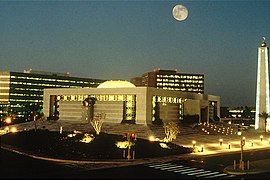 |
Saudi Aramco headquarters complex. The Saudi government took a 25% share in Aramco in 1973, increased it to 60% in 1974, and fully nationalized it in 1980
The Saudi economy and infrastructure was developed with help from abroad, particularly from the United States, creating strong links between the two dissimilar countries, and considerable and problematic American presence in the Kingdom. The Saudi petroleum industry under the company of ARAMCO was built by American petroleum companies, U.S. construction companies such as Bechtel built much of the country's infrastruture, Trans World Airlines, built the Saudi passenger air service; the Ford Foundation modernized Saudi government; the U.S. Army Corps of Engineers built the country's television and broadcast facilities and oversaw the development of its defense industry.[25]
During the 1973 Arab-Israeli war, Saudi Arabia participated in the Arab oil boycott of the United States and Netherlands. A member of the Organization of Petroleum Exporting Countries (OPEC), Saudi Arabia had joined other member countries in moderate oil price increases beginning in 1971. After the 1973 war, the price of oil rose substantially, dramatically increasing Saudi Arabia's wealth and political influence.[8]
Faisal was assassinated in 1975 by his nephew, Prince Faisal bin Musa'id.[26]
Khalid's reign: 1975-1982

The surviving insurgents of the seizure of the Grand Mosque,1979 under custody of Saudi authorities. c. 1980.
Part of the response of the royal family was to enforce a much stricter observance of Islamic and traditional Saudi norms in the country (for example, the closure of cinemas) and to give the Ulema a greater role in government. Neither entirely succeeded as Islamism continued to grow in strength.[8][22][23][27] King Khalid empowered Crown Prince Fahd to oversee many aspects of the government's international and domestic affairs. Economic development continued rapidly under King Khalid, and the kingdom assumed a more influential role in regional politics and international economic and financial matters.[8]
During the 1970s and 1980s, more than 45,000 Saudi students per year went to the United States, while more than 200,000 Americans have lived and worked in the Kingdom since the discovery of oil.[25]
A tentative agreement on the partition of the Saudi-Iraqi neutral zone was reached in 1981. The governments finalized the partition in 1983.[8]
King Khalid died in June 1982.[8]
Fahd's reign: 1982-2005
A column of Saudi M-113 armored personnel carriers taking part in Operation Desert Storm, 1991
Following the Iraqi invasion of Kuwait in 1990 Saudi Arabia joined the anti-Iraq Coalition and King Fahd, fearing an attack from Iraq, invited American and Coalition soldiers to be stationed in Saudi Arabia. Saudi troops and aircraft took part in the subsequent military operations. However, allowing Coalition forces to be based in the country proved to be one of the issues that has led to an increase in Islamic terrorism in Saudi Arabia, as well as Islamic terrorist attacks in Western countries by Saudi nationals – the 9/11 attacks in New York being the most prominent example.[8][28]
Islamism was not the only source of hostility to the regime. Although now extremely wealthy, the country's economy was near stagnant, which, combined with a growth in unemployment, contributed to disquiet in the country, and was reflected in a subsequent rise in civil unrest, and discontent with the royal family. In response, a number of limited 'reforms' were initiated (such as the Basic Law). However, the royal family's dilemma was to respond to dissent while making as few actual changes in the status quo as possible. Fahd made it clear that he did not have democracy in mind: “A system based on elections is not consistent with our Islamic creed, which [approves of] government by consultation [shūrā].”[8]
In 1995, Fahd suffered a debilitating stroke and the Crown Prince, Prince Abdullah assumed day-to-day responsibility for the government, albeit his authority was hindered by conflict with Fahd's full brothers, the Sudairi 'clan'. Abdullah continued the policy of mild reform and greater openness, but in addition, adopted a foreign policy distancing the kingdom from the US. In 2003, Saudi Arabia refused to support the US and its allies in the invasion of Iraq.[8] However, terrorist activity increased dramatically in 2003, with the Riyadh compound bombings and other attacks, which prompted the government to take much more stringent action against terrorism.[27]
Abdullah's reign: 2005 to the present
In 2005, King Fahd died and his half-brother, Abdullah ascended to the throne. The king subsequently introduced a new program of moderate reform. The country’s continued reliance on oil revenue was of particular concern, and among the economic reforms he introduced were limited deregulation, foreign investment, and privatization.He has taken much more vigorous action to deal with the origins of Islamic terrorism, and has ordered the use of force for the first time by the security services against some extremists. In February 2009, Abdullah introduced a series of governmental changes to the judiciary, armed forces, and various ministries to modernize these institutions. Notable among his decisions were the replacement of senior individuals within the judiciary and the Mutaween (religious police) with more moderate candidates and the appointment of the country’s first female deputy minister
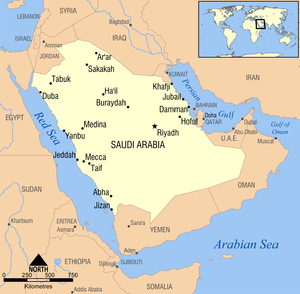





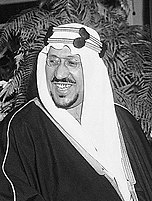
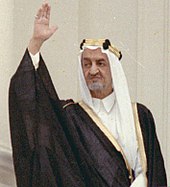

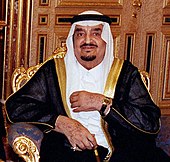
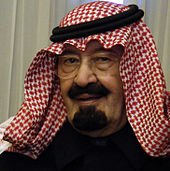


No comments:
Post a Comment